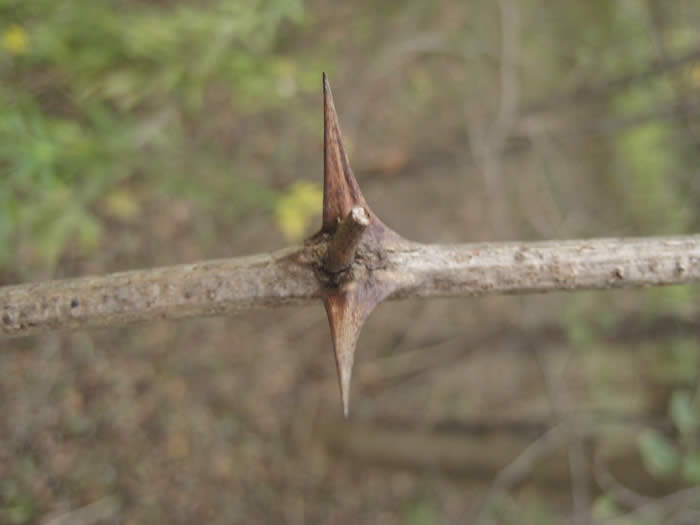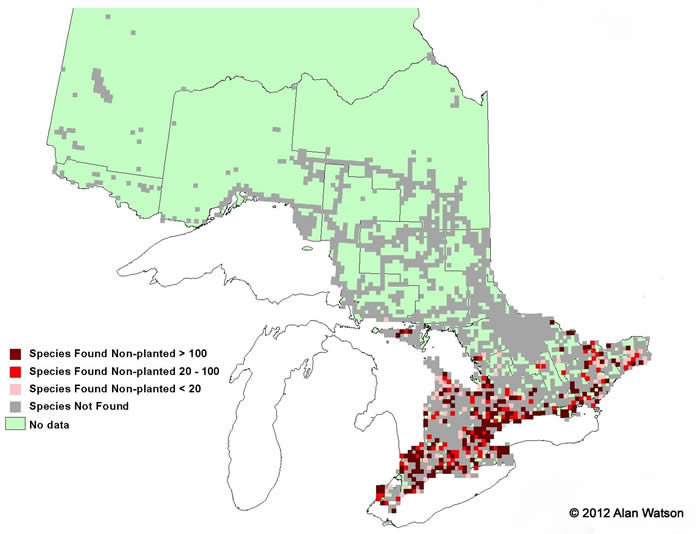Black Locust - Robinia pseudoacacia
This species is not native to Canada but has naturalized in many places in Ontario. The Black Locust is shade intolerant and is usually found along roadsides and moist woodlands. It was introduced to Canada in the early 1600's and was often used for fence posts and railway ties. The inner bark as well as the seeds are toxic to humans. Early tribes often used the poisonous wood in their arrows and although toxic to us, many birds and mammals feed on the seeds.

The buds of the Black Locust are covered with overlapping scales. Two spines are located beside each bud. Photo by Sean Fox.

These seed pods measure 7-10 cm long and remain on the tree during the winter months. Photo by Sean Fox.

Bark of the Black Locust is smooth and brown and becomes furrowed with age. Photo by Sean Fox.

Ontario Tree Atlas map of non-planted Black Locust. 1995-1999.
References
Farrar, J.L.. 1995. Trees in Canada. Fitzhenry & Whiteside Ltd. Toronto. ON. 504 pp.
Kershaw, L. 2001. Trees in Ontario: Including tall shrubs. Lone Pine Publishing. Edmonton. AB. 240 pp
Muma, W. 2011. Ontario Trees and Shrubs. [Online] Available: www.ontariotrees.com
OMNR, 2011. Ontario Ministry of Natural Resources: Ontario Tree Atlas. [Online] Available: http://www.mnr.gov.on.ca/en/Business/ClimateChange/2ColumnSubPage/267027.html
OMNR, 2008. Ontario’s Biodiversity: Species at Risk.